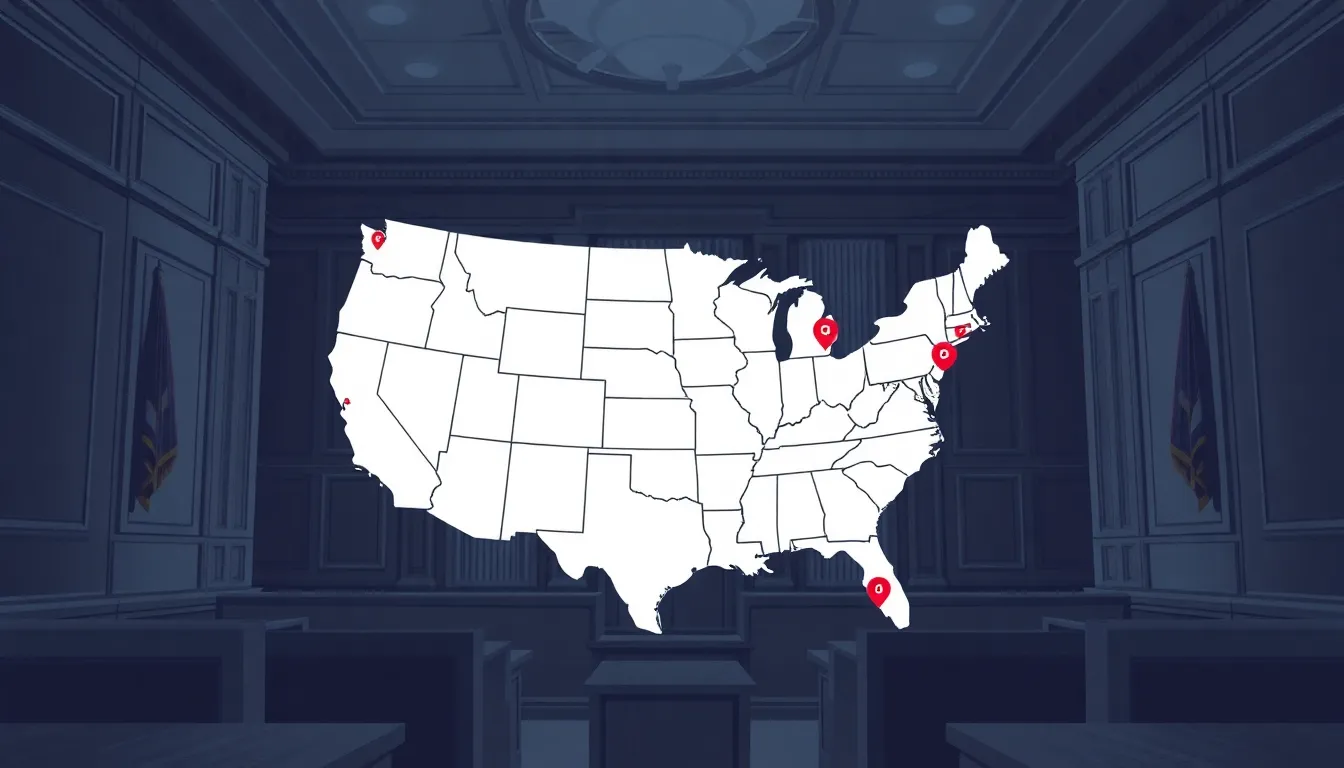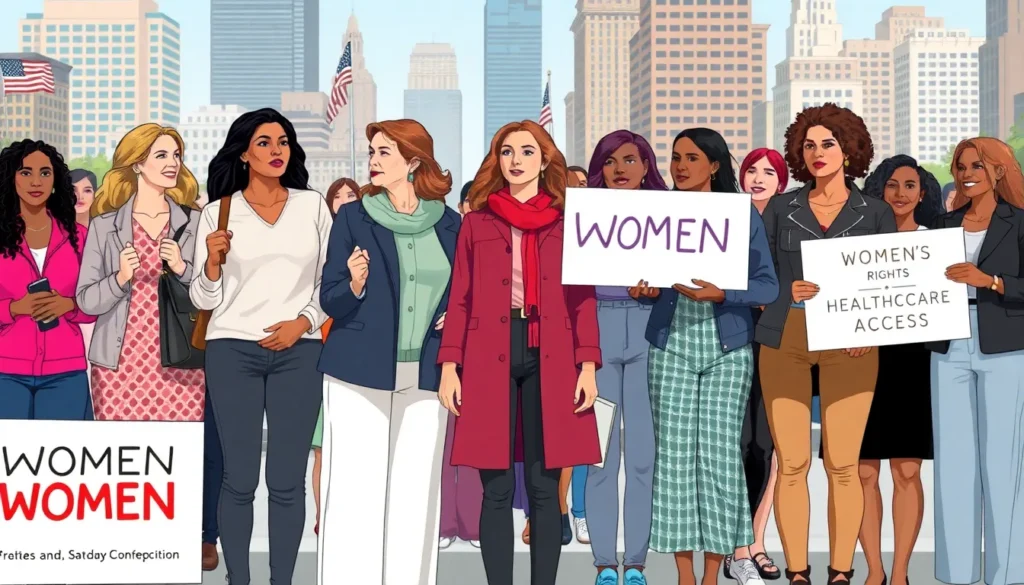Table of Contents
ToggleIn a world where the only constant is change, the landscape of abortion laws can feel like a game of musical chairs—except no one’s laughing. With recent shifts in legislation, understanding how many states have made abortion illegal is more crucial than ever. It’s not just a statistic; it’s a reflection of the ongoing debate about women’s rights and healthcare access across the nation.
Overview of Abortion Legislation
Abortion legislation in the United States varies widely by state, with laws changing frequently. States have enacted various restrictions, influencing access dramatically. Currently, several states impose strict bans on abortion, with some prohibiting the procedure entirely. States like Texas, Alabama, and Arkansas lead in implementing prohibitive laws.
Legislative measures often reflect regional values and political climates. In total, 13 states have effectively made abortion illegal with no exceptions for rape or incest. Each state’s legal framework includes diverse regulations, from waiting periods to mandatory counseling requirements.
Some states have passed trigger laws that activated following the Supreme Court’s decision in Dobbs v. Jackson Women’s Health Organization. Such laws highlight how quickly the legal landscape can shift, impacting access for many individuals.
Statistics show a significant number of women reside in areas where abortion is difficult to obtain. Research indicates that nearly 36 million women of reproductive age live in states with limited access to abortion services. This reality underscores the need for vigilance and advocacy regarding reproductive rights in varying state environments.
Changes in legislation often lead to legal challenges, further complicating the situation. Courts in several states have blocked or upheld bans, reflecting the ongoing legal battles surrounding abortion access. Understanding each state’s laws is crucial, as the implications extend beyond individual states, influencing national discourse on women’s rights and healthcare access.
Current Status of Abortion Laws in the U.S.

Abortion laws in the United States currently present a complex landscape, reflecting significant regional differences and ongoing legal debates.
States Where Abortion is Illegal
Thirteen states have enacted laws that render abortion effectively illegal, encompassing severe restrictions with no exceptions for rape or incest. States such as Texas, Alabama, and Arkansas lead this list, implementing prohibitive regulations that severely limit access to abortion services. Other states also follow suit, contributing to a challenging environment for many women seeking reproductive healthcare.
Variations in State Laws
Regulations concerning abortion vary significantly among states, generating a patchwork of laws. Some states impose waiting periods or mandatory counseling, while others enforce stricter guidelines or complete bans. Political climates and regional values greatly influence these legislative measures. Following the Supreme Court’s ruling in Dobbs v. Jackson Women’s Health Organization, additional trigger laws emerged, reshaping the legal landscape nearly overnight. Understanding these variations is crucial for navigating the complexities of abortion access in the U.S.
Factors Influencing Abortion Legality
Abortion legality stems from various influences, most notably the political landscape and public sentiment on the issue.
Political Landscape
Legislators drive abortion laws in each state, reflecting political affiliations and prevailing ideologies. As of October 2023, states such as Texas, Alabama, and Arkansas have enacted strict bans on abortion, showcasing strong conservative values. Trigger laws enacted after the Dobbs v. Jackson Women’s Health Organization decision indicate a reactive political approach, altering legal access quickly. Lawmakers often base decisions on their constituencies, prioritizing regional opinions and ideologies. Diverse regulations, including waiting periods and counseling requirements, create a complex legal atmosphere.
Public Opinion and Activism
Public opinion significantly shapes abortion policies across states. Surveys show a majority of Americans support access to abortion under certain circumstances, yet views vary widely by region. Advocacy groups actively mobilize, pushing for reproductive rights and challenging restrictive laws. High-profile campaigns often raise awareness and influence political landscapes. Activism also arises in response to legal changes, prompting marches and lobbying efforts. This engagement ensures that public sentiment continues to be a powerful element in the evolving dialogue surrounding abortion legality.
Implications of Abortion Restrictions
Abortion restrictions reveal significant consequences affecting women’s health and society. The legal environment shapes healthcare access and outcomes for women across the nation.
Impact on Women’s Health
Access to safe abortion services is crucial for women’s health. Restrictions lead to increased risks associated with pregnancy and unsafe procedures. Many women may resort to unsafe methods when legal options are unavailable. Complications can arise from carrying unwanted pregnancies to term, including physical and mental health challenges. The lack of reproductive healthcare exacerbates inequalities, disproportionately affecting marginalized communities. Data reveals that nearly 36 million women of reproductive age live in regions facing restricted access to essential services, highlighting the need for urgent action.
Legal and Social Consequences
Abortion restrictions carry legal ramifications and social repercussions. Legal challenges often emerge when laws infringe on individual rights. Social stigmas attached to abortion can result in isolation for those seeking assistance. Additionally, restrictive laws can strain the judicial system, as courts grapple with ongoing cases about the legality of these decisions. Community responses may also emerge, reflecting varying opinions about reproductive rights. Advocacy organizations continue to mobilize efforts to counteract these restrictions. Public sentiment remains pivotal in influencing future legislation and shaping the dialogue surrounding women’s rights.
The current state of abortion laws in the United States reveals a deeply divided landscape. With 13 states effectively banning abortion without exceptions for rape or incest the implications for women’s health and rights are significant. As the legal environment continues to shift following landmark court decisions and regional legislative actions advocacy efforts remain crucial in addressing these challenges.
Public sentiment plays a vital role in shaping future laws and ensuring access to reproductive healthcare. It’s essential for individuals to stay informed and engaged as the conversation around abortion evolves. The ongoing dialogue surrounding these issues will ultimately influence the rights and health of millions of women across the country.







